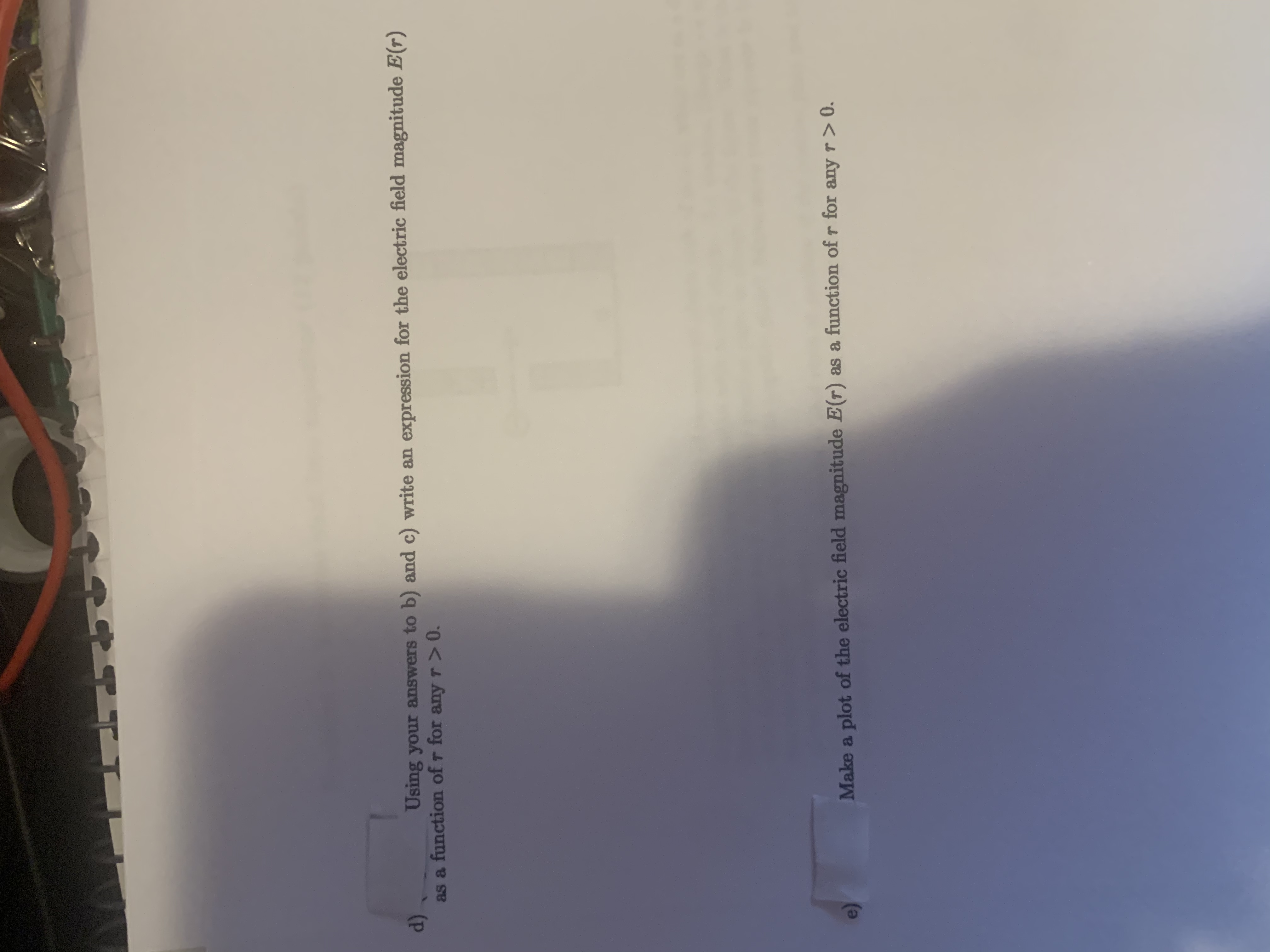Question

Transcribed Image Text:5. Use Gauss' law and your answers to the previous parts to find the electric field at point P. Give
both the magnitude and direction (give the magnitude in terms of the given quantities).
Now consider a point Q inside the cylinder, at a distance h from its axis, h < R, as shown
in the figure. Your goal for this part is to properly use Gauss' law to calculate the electric field at
point Q. Follow the 5 steps below.
14
CROSS-SECTIONAL VIEW
1. Choose an appropriate Gaussian surface; explain in words what your Gaussian surface looks like
and make a clear sketch of your Gaussian surface together with the sketch of the cylinder.

Expert Solution
This question has been solved!
Explore an expertly crafted, step-by-step solution for a thorough understanding of key concepts.
This is a popular solution
Trending nowThis is a popular solution!
Step by stepSolved in 2 steps with 2 images

Knowledge Booster
Similar questions
- 2. A ring of radius a has a total charge +Q distributed uniformly around its circumference. As shown in Figure I, the point P is on the axis of the ring at a distance b from the center of the ring. a) On Figure I above, show the direction of the electric field at point P. Figure I b) Determine the magnitude of the electric field intensity at point P.arrow_forwardConsider the isosceles triangle below.a. Draw the diagram of forces on sphere A by applying the laws of electric forces if spheres B and C have negative charges and sphere A has a positive charge.b. Using vector decomposition, calculate the net electric force acting on sphere A if it has a charge of +3 x10^-6 C, if sphere B has a charge of -1.2 x10^-6 C and if the sphere C has a charge of -2.5x10^-6 C. The angle A is 78.5 degrees.arrow_forwardPlease check my work for 1a and 1b please while also aiding me in answering 1c. k=9x10^9 Nm^2/C^2 1a.What is the net electric force on charge Q3 due to charges Q1 and Q2? (Direction and Magnitude) 1b.What is the net electric force on charge Q2 due to charges Q1 and Q3? (Direction and Magnitude) 1a.What is the net electric force on Point P due to charges Q1, Q2, and Q3? (Direction and Magnitude)arrow_forward
- please answer all parts w good explanationarrow_forward4.) What is the net electric flux through the closed surface in each case shown below? Assume that 5 lines leave a charge of +q or terminate on a charge of -q. (Assume that all the surfaces are three dimensional.) Use the net number of field lines leaving the surface as a measure of flux. Explain in the spaces below how you arrived at your answers. a. +q b. d. +2q +q +2q -3q C. +2q -3qarrow_forwardPart one and two to same problemarrow_forward
arrow_back_ios
arrow_forward_ios